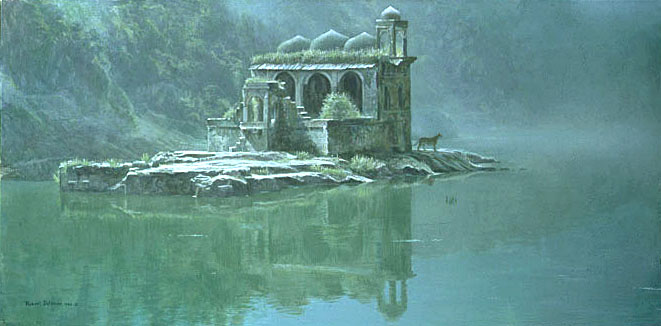
The tiger, the great cat of Asia, is a symbol of life and strength. Unlike the gregarious lion, the tiger lives a solitary and secretive life. Yet, because he can be so dangerous, this elusive quality only adds to his air of mystery and seems to give him mystical powers. Tragically, this attribute has proved to be his undoing. Certain Asian cultures believe that the tiger's body parts will instill a variety of benefits in human beings . . . the most sought after being virility.
This belief, when put into practice, has always meant the slaughter of tigers. In recent years, the practice has grown from local folk medicine to modern marketing, modern weapons and international trade. The result: tiger populations are in a tailspin to oblivion.
Seeing a tiger in the wild is still a possibility in a handful of nature reserves, especially in India. Even here, tigers are poached, and the environment is being destroyed by human population pressures. Tigers are never easy to see.
My wife, Birgit, and I set out to find tigers in the wild in Rhanthambhore, a spectacular park in Rajasthan (formerly "Rajputana") in northwest India. Great mountainous plateaus sliced by rugged ravines make a perfect habitat for the Bengal tiger. For the people of this forest, the tiger was once the most powerful representation of nature that walked the earth, symbolizing its forces as both the giver and taker of life.
We spent several days looking for tigers there in vain. As I said, they are not like lions. While exploring the ruins of the Hindu kingdom, we came upon a little lake with a small temple perched perfectly on a peninsula. We were there at midday, but in my mind's eye, I saw it at dawn, or by moonlight, or perhaps twilight. There could be a tiger, emerging from the shelter of the temple, looking out over the lake. There must have been a tiger there, at that spot, at some time through the centuries, but not when we were there to see it.